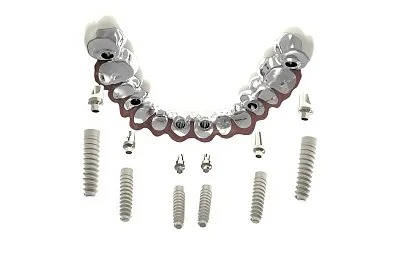Essential Precautions and Aftercare Tips to Ensure Success of Your Dental Filling Procedure
Summary: Dental fillings are essential for restoring teeth affected by decay or damage. However, the success of the procedure greatly depends on pre-treatment precautions and post-treatment care. This article discusses four vital aspects: preparing for the procedure, understanding the filling process, adhering to post-care instructions, and recognizing warning signs after treatment. By following these guidelines, patients can ensure a smoother experience and optimize the longevity of their dental fillings. This holistic understanding promotes not only better outcomes but also overall oral health, making the dental filling procedure less intimidating and more effective.
1. Preparing for the Dental Filling Procedure

Before undergoing a dental filling, its essential to prepare adequately for the procedure. An open conversation with your dentist about your symptoms and any relevant health conditions can ensure that the most appropriate filling material is selected. Certain medications or pre-existing conditions may alter how your body reacts to anesthesia or healing, and your dentist should be informed of these factors.
Moreover, if you experience dental anxiety, consider discussing sedation options with your dentist. This can significantly enhance your comfort and overall experience during the procedure. Understanding what to expect can alleviate nervousness and create a positive mindset.
Lastly, arranging for transportation post-procedure is advisable, especially if sedation is involved. Even mild sedation can impact your reflexes, making it unsafe to drive. Prepare for this by scheduling a ride or utilizing public transportation.
2. Understanding the Filling Process
Having a clear understanding of how dental fillings are placed can aid in mitigating patient anxiety. The procedure generally involves the dentist numbing the area around the affected tooth to minimize discomfort. Once numb, the dentist removes the decayed portion of the tooth, creating a clean surface for the filling. The next step is to choose the type of filling, whether composite, amalgam, or another material.
Each type of filling has its own advantages, such as aesthetic appeal for composite options or durability with amalgam. Discussing these choices with your dentist and understanding their pros and cons can enhance your satisfaction with the final result.
After placing the filling, your dentist will polish it to ensure a comfortable bite. This step is crucial, as even a minor misalignment can lead to discomfort during daily functions like chewing. Make sure to inform your dentist of any irregularities before you leave the office.
3. Following Post-Care Instructions
Adhering to post-care instructions is crucial for the longevity of your filling and overall dental health. After the procedure, it’s common to experience some numbness, which can last for several hours. To prevent biting your cheek or tongue accidentally, it’s best to avoid eating until the numbness wears off.
Additionally, your dentist may recommend a specific dental care routine tailored to your situation, including how to properly clean the filling area. This might involve gentle brushing and avoiding certain oral hygiene products that may be abrasive.
If you experience sensitivity to hot or cold after the procedure, it may be normal for a short period. However, if this sensitivity persists, it is crucial to reach out to your dentist for further evaluation. Prompt attention to such issues can prevent more serious complications.
4. Recognizing Warning Signs After Treatment
Being vigilant about your dental health post-filling can save you from potential issues. After the procedure, it is important to monitor your tooth for any persistent pain, swelling, or unusual sensations. These could indicate problems with the filling or other dental complications.
Additional signs to watch for include difficulty chewing or a noticeable change in your bite. Any discomfort related to these activities should be addressed promptly with your dentist to ensure that issues are resolved before they worsen.
Finally, routine dental check-ups are vital. They not only allow dentists to monitor the integrity of your filling but also provide an opportunity to catch other potential problems early. Regular visits can contribute significantly to the longevity of both your fillings and your overall dental health.
Summary:
In summary, proper preparation, an understanding of the filling process, adherence to post-care instructions, and recognizing warning signs are all paramount for a successful dental filling procedure. By actively participating in your dental care, you can ensure not only the effectiveness of the filling but also contribute positively to your overall oral health.
This article is compiled by Vickong Dental and the content is for reference only.


